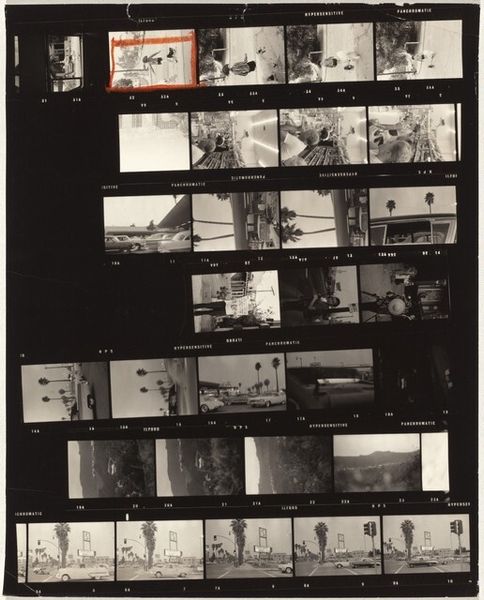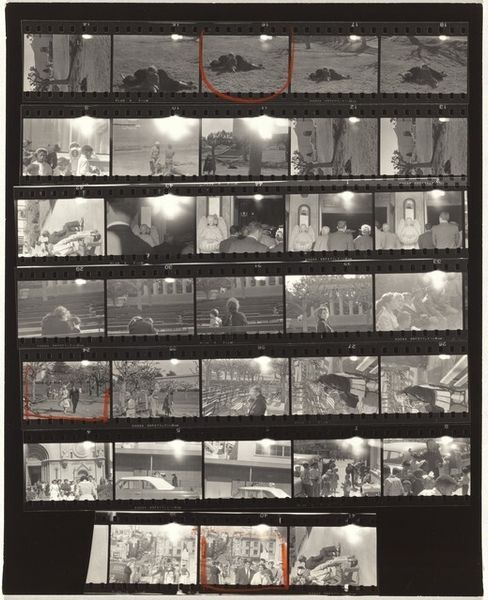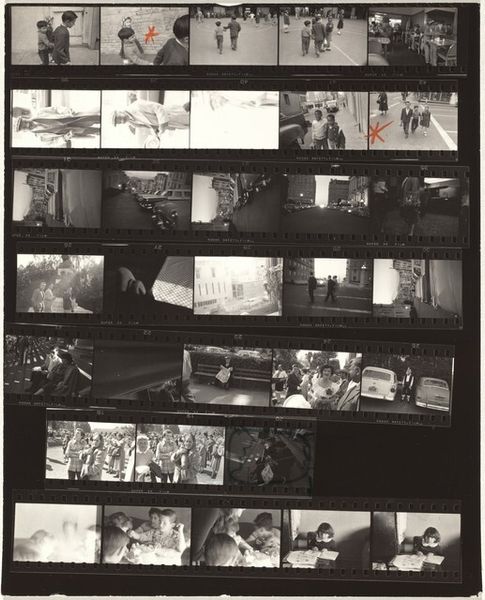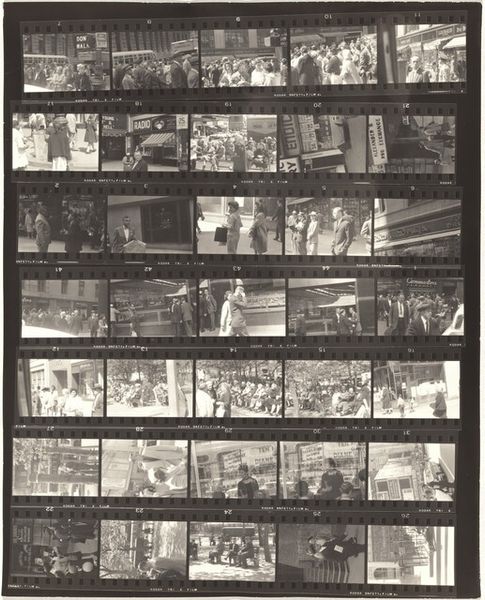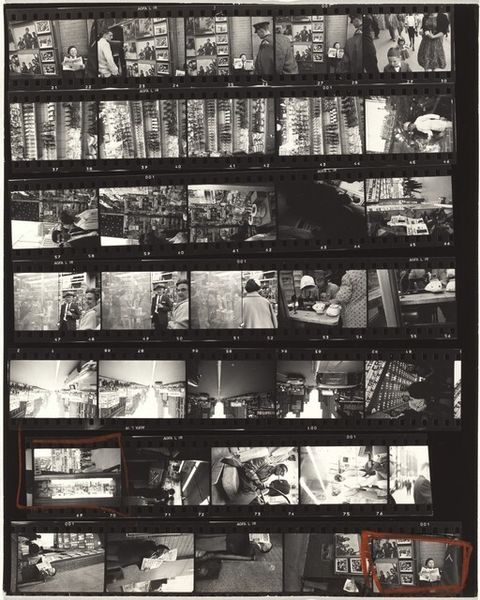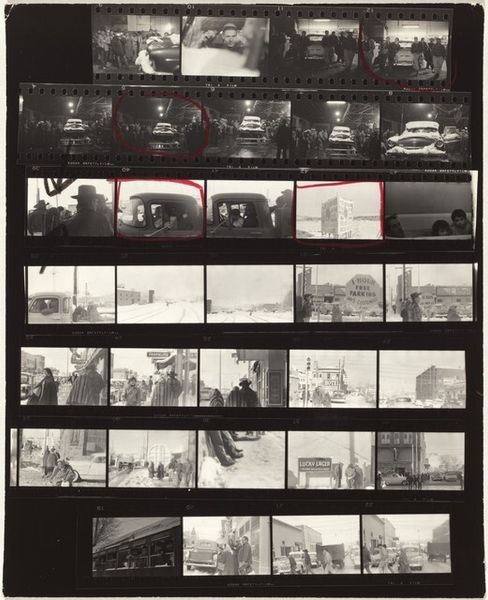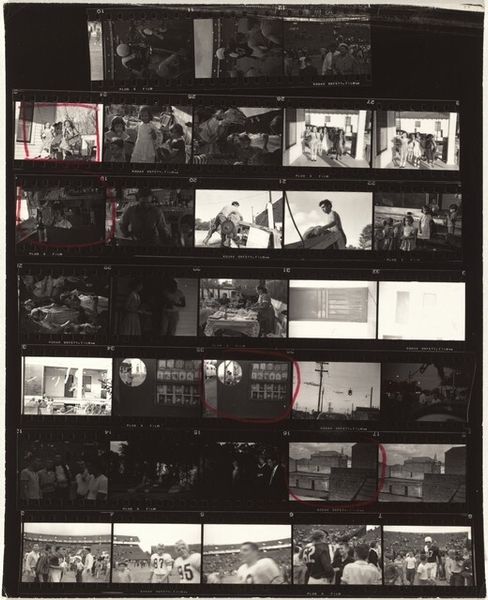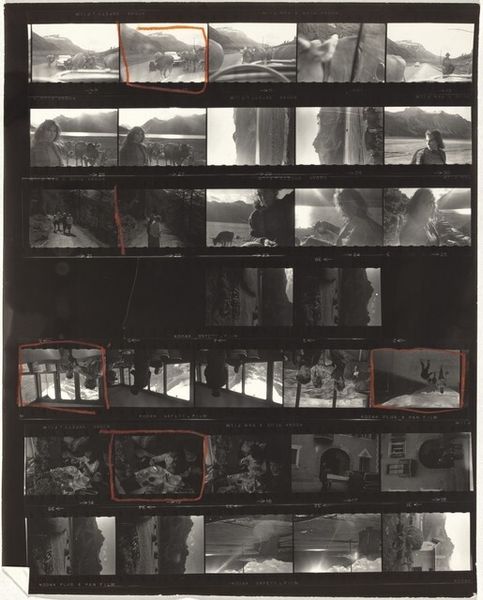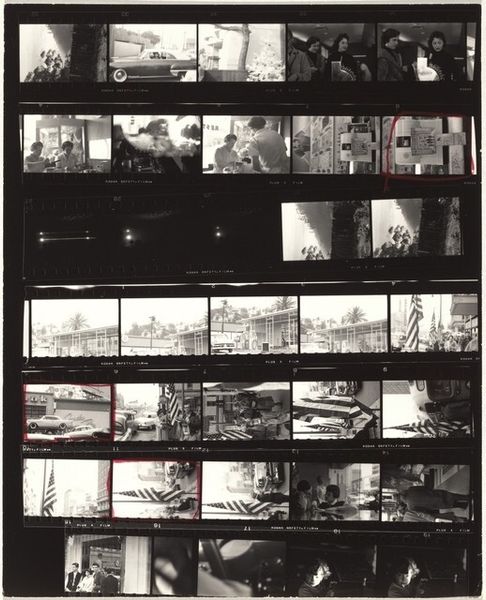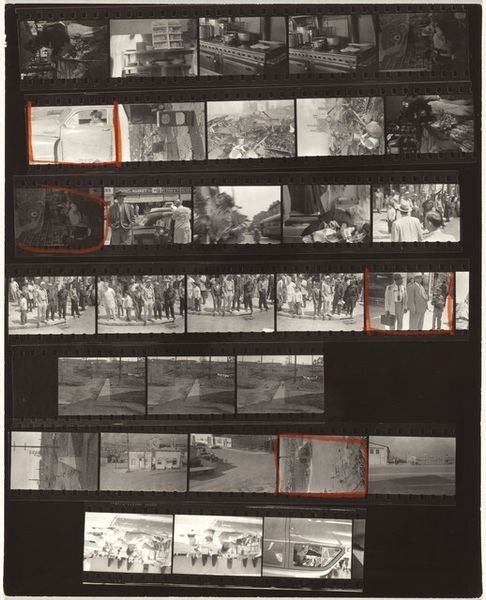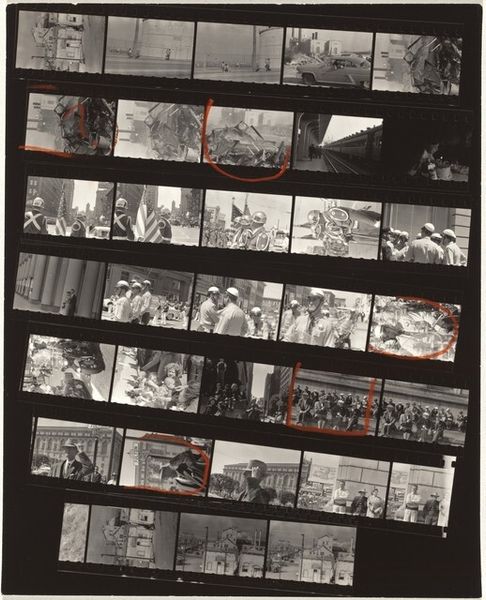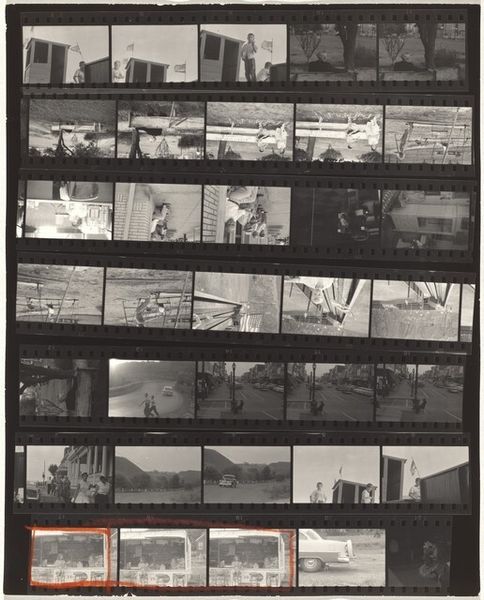
Guggenheim 542--Pasadena Museum of Art, Pasadena, California 1955 - 1956
0:00
0:00
Dimensions: overall: 25.3 x 20.5 cm (9 15/16 x 8 1/16 in.)
Copyright: National Gallery of Art: CC0 1.0
Curator: This is Robert Frank’s "Guggenheim 542—Pasadena Museum of Art, Pasadena, California" created between 1955 and 1956. The artwork is a gelatin silver print capturing various street scenes and architectural details. Editor: Well, it feels immediately fragmented. Like peering into the scattered memories of a traveler. The high-contrast monochrome lends a certain gravity. Curator: The work showcases a contact sheet format, emphasizing the sequential nature of Frank’s photographic process. The selection, juxtaposition, and framing of these scenes are crucial. Editor: True. We see everyday moments—street scenes, snippets of buildings, people in passing—elevated through his specific composition. I wonder how the socio-economic context of mid-century America informed his lens. The mundane presented with an almost detached objectivity, speaking volumes about post-war alienation perhaps? Curator: Your read introduces an important interpretive dimension. From a purely formal perspective, note how Frank disrupts traditional compositional hierarchy. He offers instead a field of equals in an irregular array. Editor: It's interesting, the street shots. They’re cropped vignettes capturing anonymous passersby. They're a raw visual testimony of real life – capturing emotions without imposing narratives on the people within the photographs. Curator: Frank often explored themes of displacement and societal disconnect. The visible sprocket holes of the filmstrip add an interesting dimension. It accentuates the tangible medium of photography itself. Editor: A good point! And, thinking about how photography can influence narratives and identity, what’s particularly intriguing is how museums become framed too. Do they legitimize reality, offer escape from it, or are they just part of it? Curator: This contact sheet aesthetic creates its own dialogue between these disparate images. Editor: I agree. Robert Frank's eye has gifted us an intriguing moment to interpret. Curator: Indeed. The sum exceeds the parts, creating a uniquely insightful portrait of American life during the mid-twentieth century.
Comments
No comments
Be the first to comment and join the conversation on the ultimate creative platform.
